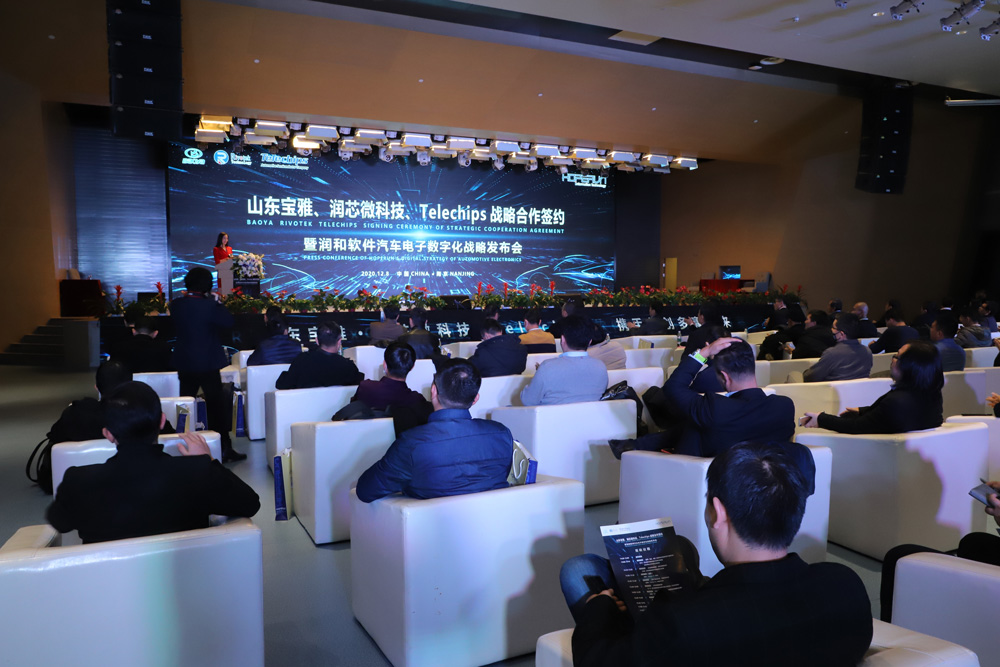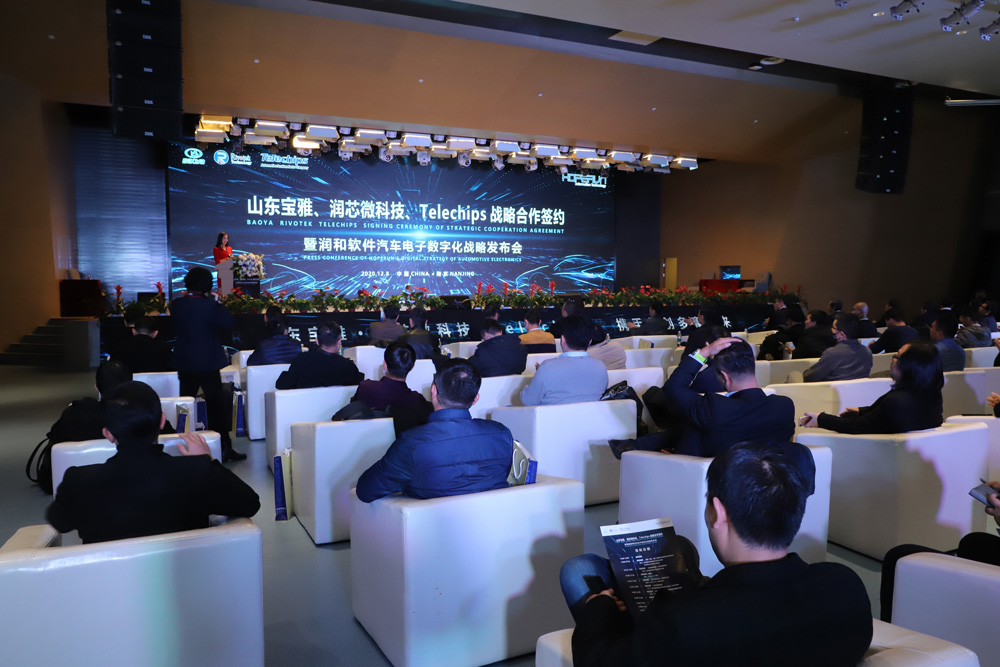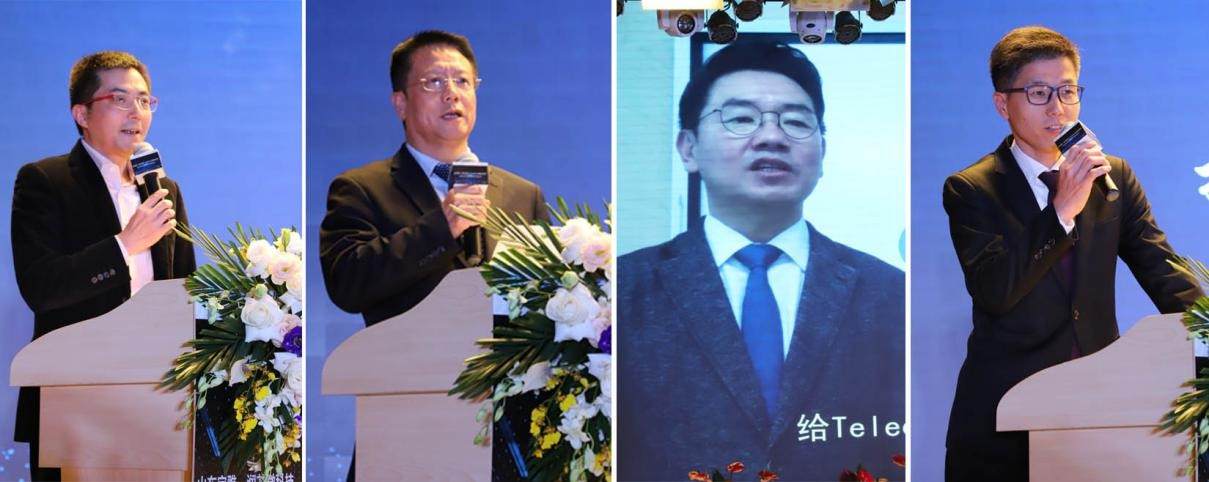
Fully promote the deep integration of next-generation digital technology and the automotive industry Baoya signed a strategic cooperation agreement with Runhe Software and Telechips
At present, the global automobile industry is in an era of great transformation from the traditional industry to the digital industry. The application of a new generation of information technology represented by 5G, the Internet, and artificial intelligence in the automobile industry promotes the deep integration of relevant segments of the automobile industry. Multi-screen linkage, smart surfaces, autonomous driving, new materials, and emotional engines are rapidly spreading to mid-and high-end luxury electric vehicles. In the next decade represented by smart cockpits, more digital technologies will be perfectly integrated, and the smart cockpit will also be presented in a newer form.

On December 8, 2020, Runxin Micro Technology (Jiangsu) Co., Ltd. (hereinafter referred to as Runxin Micro Technology) invested and incubated by Shandong Baoya New Energy Automobile Co., Ltd. and Jiangsu Runhe Software Co., Ltd. (hereinafter referred to as Runhe Software). , Telechips Inc jointly held a tripartite strategic signing ceremony at Runhe Software Nanjing headquarters. The three parties have joined forces to build a new digital ecosystem for domestic automotive electronics.
Representatives from Xiaomi Technology Co., Ltd., Horizon Technology Co., Ltd., 70 Mai, and nearly 50 industry executives, experts and ten experts from traditional automobiles, car networking solutions, Internet of Things, AI chips and artificial intelligence, consumer electronics, Huawei, Alibaba Cloud, etc. as well as journalists from mainstream media also attended the press conference. Wang Xiangyin, President of Shandong Baoya, said at the meeting that the new four modernization drives are the future of the development of the automotive industry, and the intelligent network is the core driving force in these new four modernization drives. The application of software and hardware technology will help cars build human-vehicle interaction and vehicle driving. The intelligent expansion of the two major fields, the intelligent networked car should be through the organic combination of the Internet of Vehicles and the intelligent car, by carrying hardware devices and integrating modern communication and network technologies, to realize the intelligent information exchange and sharing between vehicles and people, vehicles and vehicles, vehicles and roads, vehicles and backgrounds, and a new generation of vehicles that are safe, comfortable, energy-saving, and efficient, and can ultimately replace human operation. Luo Jun, president of Baoya Automobile Research Institute, said that in 2019, the differentiation of the global new energy vehicle industry will intensify. For one thing, the major old traditional auto giants have successively laid off employees and banded together, and for another, there are the new car-making forces represented by Tesla. The internationalization process is accelerated. On the one hand, China's new energy vehicle subsidies have declined, and sales have experienced negative growth for the first time. On the other hand, Germany has increased new energy vehicle subsidies and European new energy vehicle sales have increased significantly. In recent years, with the cross-border entry of technology giants such as the Internet and semiconductors, the competition pattern of the automobile industry has been reshaped and the core value chain has been restructured. Some OEMs may become foundries in the future; the governments of Europe, Japan and South Korea have accelerated electric transformation, The forward-looking strategy of China's development of new energy vehicles ten years ago has been verified again and again; the attributes of automobile products are more diversified, and the automobile will become a software-defined intelligent mobile terminal.

Since Carl Benz invented the first modern car in 1885, the automotive industry has never been the meeting point of so many technological changes, involving energy, transportation, communications, computers and many other industries. The new four modernization drives of automobiles - electrification, intelligence, networking, and sharing have begun. The century-old automobile industry is standing on the eve of the dawn of major changes and reshuffles.

The achievement of this strategic cooperation is the result of in-depth thinking by the three parties based on the current driving application scenarios and the technological trends of the automotive industry. In the future, the "active interaction" between people and vehicles will definitely break the traditional way of being initiated by people and then deepening layer by layer. As the main scenario of "intelligent network connection", the smart cockpit will proactively put the corresponding services in front of people when they need it.

Zhou Hongwei, chairman and president of Runhe Software, also said that digitalization and intelligence are the key factors determining the value of future automobiles. Runhe will be customer-centric and focus on intelligent cockpit, domain controller, central computing platform, remote and big data platform development and maintenance, ADAS/DMS solutions, etc. The three parties will actively make their respective core capabilities available to each other, based on the digital transformation of automotive electronics, work together to reconstruct and open up the new industrial value chain, and build a mutually beneficial and win-win business community.
